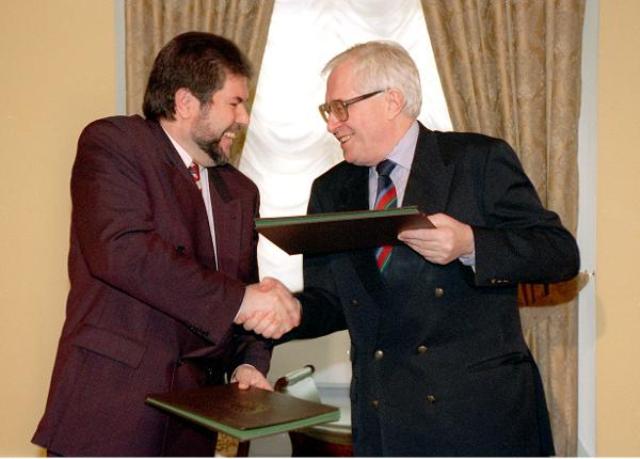Source

Source: picture-alliance / ZB (c) ZB – Fotoreport Photo: Heinz Hirndorf
On May 17, 1990, the GDR Volkskammer passed a new communal constitution that provided for the introduction of communal self-administration in place of the existing central administration. Furthermore, on July 22, 1990, the Volkskammer passed the “Establishment of the Länder Act” [Ländereinführungsgesetz], which allowed for the re-establishment of the GDR states that had been abolished back in 1952. These changes required that state administration undergo extensive restructuring or be built entirely anew. In accordance with the Unification Treaty (Article 15, paragraphs 2 and 3), the West German states and the Federal Government gave the five new federal states “administrative support in establishing state administrations” and in “completing certain technical tasks.” Between 1990 and 1995, about 35,000 West German civil servants actively provided administrative support in East Germany. The following federal states worked together within the framework of East-West partnerships for administrative support: Brandenburg and North Rhine-Westphalia, Mecklenburg West-Pomerania and Schleswig-Holstein, Hamburg and Bremen, Saxony-Anhalt and Lower Saxony, Saxony with Baden-Württemberg and Bavaria, Thuringia and Bavaria, and Hesse and Rhineland-Palatinate.
This photograph of the minister presidents of Rhineland-Palatinate and Thuringia, Kurt Beck (SPD, left) and Bernhard Vogel (CDU), was taken in Erfurt on April 11, 1995. The two had just signed a treaty on the reorganization of administrative support and are seen exchanging copies. Up until 1995, Thuringia had shared the costs for administrative assistance with Rhineland-Palatinate and Hesse. With the full inclusion of the new federal states in the State Fiscal Equalization Scheme, however, it was agreed that Thuringia would bear all of the costs.

Source: picture-alliance / ZB (c) ZB – Fotoreport Photo: Heinz Hirndorf